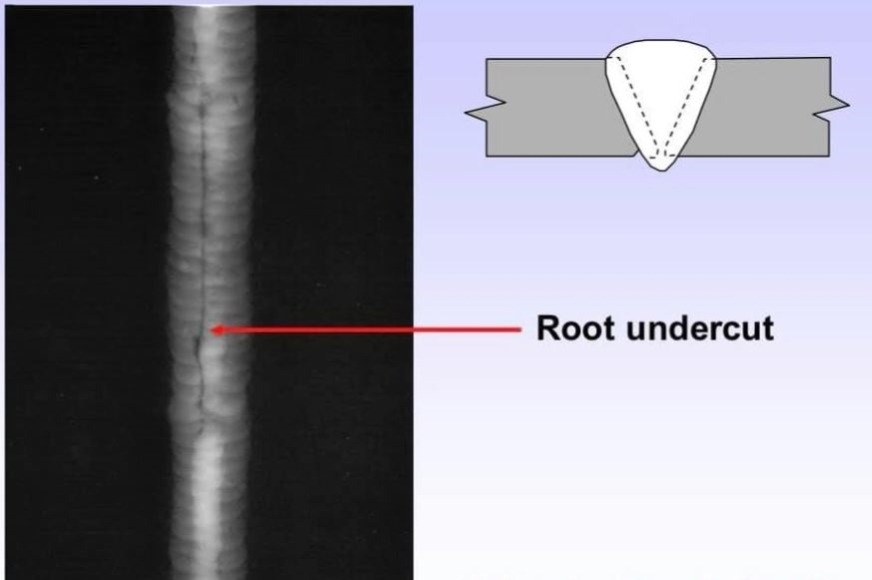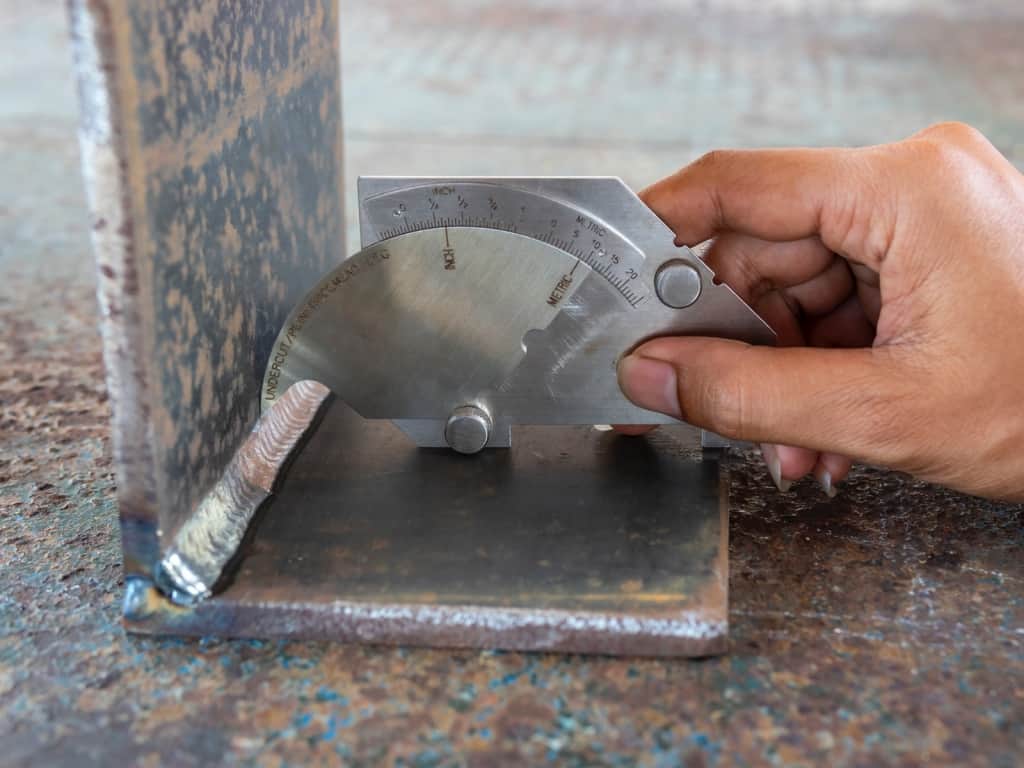Best Practices for Preventing Weld Undercut: Understanding the Fundamentals
Best Practices for Preventing Weld Undercut: Understanding the Fundamentals
Blog Article
Comprehending the Causes and Solutions for Undercut Welding in Metal Construction Processes
In the world of steel construction procedures, the incident of undercut welding presents a substantial obstacle that demands an extensive understanding of its reasons and practical solutions. The elaborate interaction of numerous elements throughout welding operations can cause this unwanted phenomenon, impacting the structural honesty and total top quality of the bonded joints - Preventing weld undercut. By dissecting the source of undercut welding and discovering reliable therapeutic actions, producers can raise the criterion of their craftsmanship and ensure the manufacturing of flawless steel elements
Typical Reasons For Undercut Welding
Frequently neglected in steel fabrication, undercut welding occurs due to numerous elements that require precise attention and experience to be effectively reduced. In addition, incorrect welding methods, such as making use of the incorrect welding angle or take a trip rate, can likewise contribute to undercut development. The choice of welding specifications, such as voltage, current, and cable feed rate, plays a considerable duty in the event of undercut welding.
Impact of Incorrect Welding Parameters
Unreliable welding criteria can substantially jeopardize the integrity and high quality of bonded joints in steel construction procedures. The effect of wrong welding specifications shows up in different means, causing architectural weaknesses and flaws in the welded parts. One crucial element impacted by incorrect welding specifications is the infiltration depth of the weld. Insufficient warmth input because of low welding currents or exceedingly high travel speeds can lead to poor blend between the base metals, resulting in insufficient joint infiltration and weakened bonds. Conversely, excessive heat input triggered by high welding currents or sluggish travel speeds can result in burn-through and excessive reinforcement, creating a fragile and unstable weld structure. In addition, inaccurate specifications such as inappropriate voltage settings or inaccurate electrode angles can contribute to unpredictable weld grain accounts, absence of fusion, and increased opportunities of defects like undercutting. Therefore, precise focus to welding specifications is extremely important to ensure the production of high-grade welds with the preferred mechanical homes and architectural stability.
Effect of Improper Torch Angle
Incorrect torch angle in welding operations can dramatically affect the high quality and stability of the final weld joints in metal fabrication processes. Undercutting is an usual welding flaw where a groove develops along the weld toe, damaging the joint and jeopardizing its architectural stability.
A lantern angle that is also steep can bring about inadequate penetration, incomplete combination, and increased spatter. On the other hand, a lantern angle that is too superficial can cause extreme infiltration, burn-through, and distortion of the base product. Preventing weld undercut. Proper lantern angle is necessary for guaranteeing consistent weld top quality, strength, and look
To avoid damaging and other issues created by improper lantern angles, welders have to be trained to keep the right torch angle throughout the welding process. Normal surveillance and change of lantern angles throughout welding can assist attain sound welds with marginal flaws.
Role of Inadequate Welding Strategies

One more facet of poor welding strategies is improper weld preparation. Inadequate cleansing of the base metals, wrong joint design, or not enough edge prep work look at this site can all contribute to damage welding. Moreover, insufficient protecting gas protection or making use of the find this wrong kind of gas can cause insufficient blend and the development of undercut issues.
To address the duty of inadequate welding methods in steel manufacture procedures, it is vital to provide detailed training for welders. Proper education and learning on welding specifications, joint preparation, and protecting gas choice can help avoid undercut welding and make sure top notch welds in metal construction jobs.
Effective Solutions for Undercut Welding
Dealing with undercut welding in steel construction calls for executing reliable services to enhance weld high quality and structural honesty. One of the key options to deal with undercut is to change welding parameters such as voltage, current, and travel speed to make certain correct heat input and fusion. By fine-tuning these settings, welders can stop excessive melting of the base metal and filler product, decreasing the chance of undercut development.
In addition, correct joint prep work is essential in protecting against undercut. Guaranteeing clean base steel surface areas without impurities and using the suitable bevel angle can assist advertise much better weld infiltration and decrease the threat of undercut - Preventing weld undercut. Employing appropriate welding techniques, such as oscillating the lantern or weaving, can also aid in distributing warm evenly and filling up the weld joint properly, minimizing the opportunity of undercut issues
Furthermore, selecting the right welding consumables, including electrodes and filler steels, is crucial in reducing undercut. Using products with ideal chemical make-ups and mechanical homes can add to achieving sound welds with very little undercut. Routine assessment and high quality control steps ought to additionally be carried out to detect and attend to undercut issues without delay, making certain the overall honesty of produced steel elements.

Final Thought
To conclude, comprehending the causes and options for undercut welding in metal manufacture processes is important for achieving top quality welds. By dealing with typical reasons such as incorrect welding specifications, inappropriate torch angle, and insufficient welding methods, welders can prevent damaging and make certain strong, sturdy welds. It is important to take notice of these variables and carry out reliable solutions to enhance the total welding procedure and end product quality.

Report this page